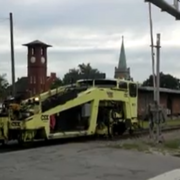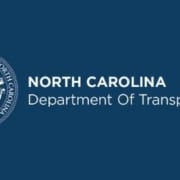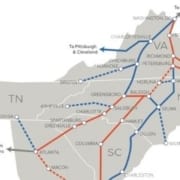Plans to bring rail service back to Henderson continue to chug along, and one city council member said he’s been pleasantly surprised at how the S-Line project is coming together.
Garry Daeke spoke with John C. Rose on Tuesday’s Town Talk about the recent announcement of a $3.4 million Rebuilding American Infrastructure with Sustainability and Equity (RAISE) grant to complete a transit-oriented development study.
“It’s incredible that we’ve been able to get these grants so quickly,” Daeke said. The wheels of government and bureaucracy often move slowly, especially when working with multiple agencies across the local, state and federal levels, Daeke noted. But everything is running along smoothly, including a recent site visit that Daeke said proved quite positive.
“I’m real enthused about the work of DOT – how much time and energy they’ve put into this – they really want to see this fly,” Daeke said. In fact, state DOT officials held a press conference Tuesday morning in Sanford to announce the awarding of the RAISE grant from the U.S. Department of Transportation. Sanford is one of the stops along the proposed S-Line, which includes stops in Apex, Raleigh, Wake Forest, Henderson and Norlina to connect the Raleigh to Richmond corridor.
The City Council is “100 percent excited” about the project, which would include a train station and other possible retail and commercial projects nearby, with the prospect of providing a huge boost to the area’s economy.
The rail would serve passenger and freight traffic, both of which Henderson has experienced in the past.
For Daeke, it’s all about working together. “Collaboration is how things happen,” he said. During the recent site visit, city staff and local officials joined NC DOT staff and railroad representatives to survey existing infrastructure and to envision how the area could be transformed.
The city put up $190,000 for its part of the project, and although Daeke said it’s a lot of money, he said he believes the project will pay big dividends for the city and beyond.
The group took a look at the old First National Bank Building on Garnett Street as a possible station, and Daeke said the reviews were positive. The group took a walking tour and looked at the former bank building as they covered basically the whole block, discussing everything from loading docks and accessibility to parking lots and bike paths.
“This will be the jewel on the new line between Petersburg and Sanford,” Daeke recalled one visitor as saying.
Between the urban redevelopment plans underway and what’s going on downtown with the Downtown Development Commission, Daeke said the state and rail officials who visited were impressed with prospects for the rail hub.
“They said it would be a fantastic site for a train station,” he said, affirming what city leaders had wondered about. “It became very clear that it could work.”
What comes next?
A feasibility study, including a site assessment and preliminary engineering plans, for starters.
But the project includes much more than just situating a train station in town.
The whole notion of a “transportation hub” involves looking at how people are going to get to the station and could include projects from creating bike lanes to widening existing roads. Then there’s the very real possibility of having to build a couple of overpasses for the trains to keep road traffic moving. Where will folks park if they want to catch the train in Henderson and leave their car for a few days?
Daeke said it will be key to take a look at where people gain access to the train and make sure that the area is safe and easily accessible for the community.
“It’s definitely a bigger plan than just building a train station,” he said.
The S-Line is a developing rail corridor that will better connect rural and urban communities, improve and expand freight and passenger services, and significantly reduce rail travel times between Raleigh and Washington D.C. To learn more, visit this NCDOT webpage.
Click Play






